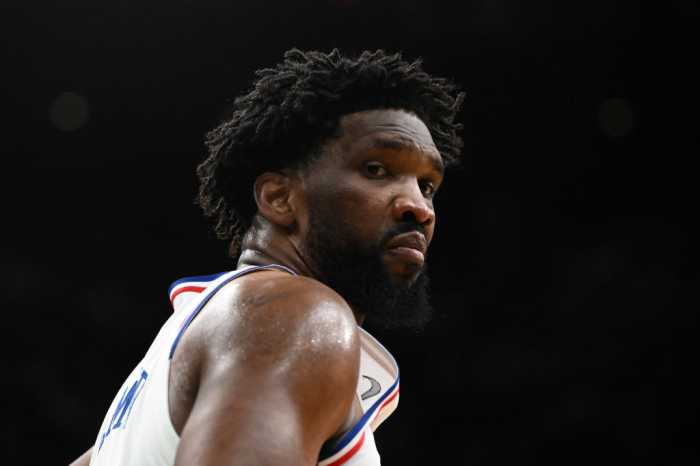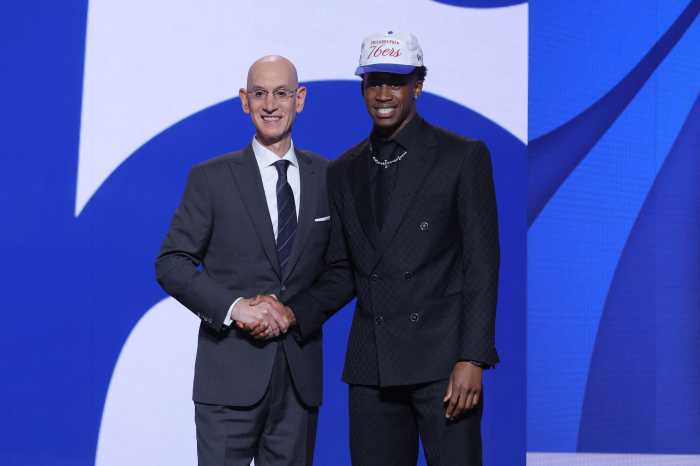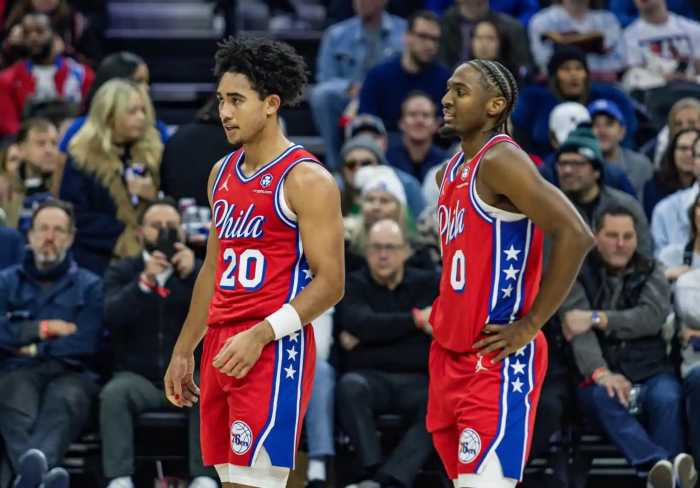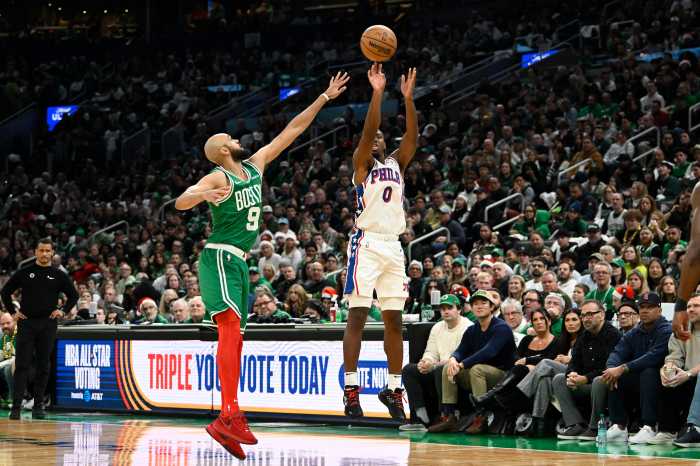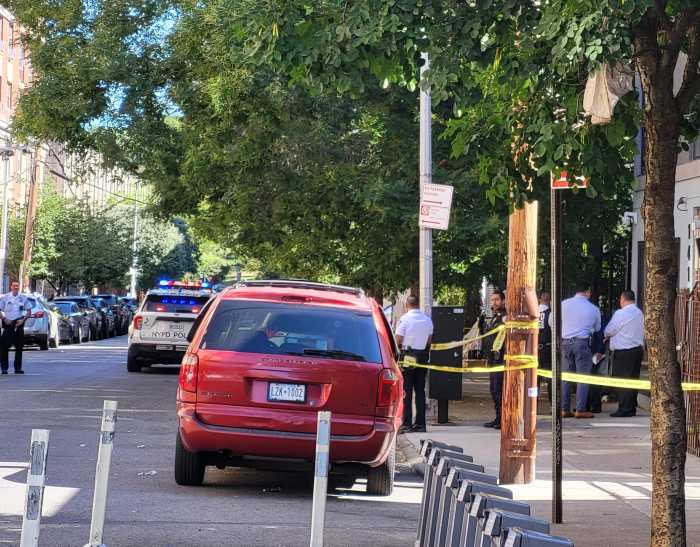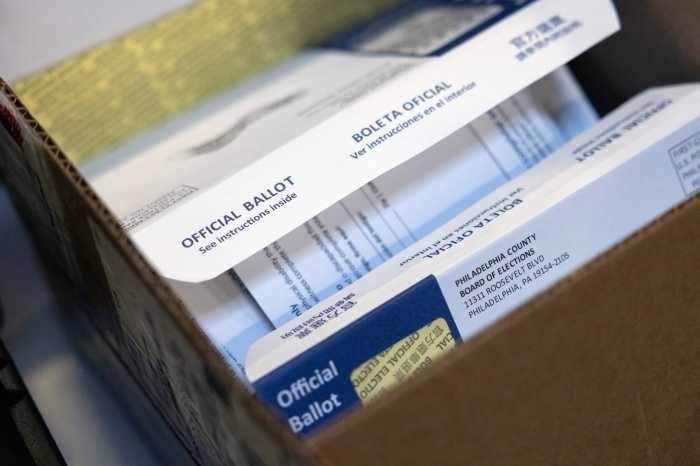Head Coach Doc Rivers has gotten a lot of flak for not taking a team that seemingly has some of the most combined talent in the NBA to loftier heights. After all, a roster that features a former MVP in James Harden, a perennial MVP candidate in Joel Embiid, a max-contract scoring wing in Tobias Harris, and a rising star in Tyrese Maxey should be a clear favorite in the league, but instead, many pundits and analysts consider the Sixers to be a dark-horse contender — a clear tier below the Boston Celtics and Milwaukee Bucks in the Eastern Conference.
While Rivers isn’t without blame, it’s worth noting that the collection of talent that President of Basketball Operations Daryl Morey has accumulated isn’t an easy solve. Actually, it’s like a Rubik’s cube that had two of its stickers swapped. (I wasn’t sure if it would still be solvable, so I checked. According to Sayed Hajaj on Quora, it’s extremely easy to make a Rubik’s cube an impossible challenge by swapping two stickers.)
The Current Sixers Rotation
Taking a look at the Sixers last five games before their matchup with the victory over the Minnesota Timberwolves, Rivers has deployed 11 players in at least three of the contests, with over 10 minutes per outing: Joel Embiid, James Harden, Tyrese Maxey, Tobias Harris, P.J. Tucker, Georges Niang, De’Anthony Melton, Shake Milton, Jalen McDaniels, Paul Reed, and Danuel House Jr. according to statmuse.
That’s at the same time one player too many and not enough.
Let’s break it down by player archetype. That’s one primary ball-handler/shot-creator (Harden), one ball-dominant inside-outside two-way superstar (Embiid), four 3-and-D wings (Harris, Tucker, McDaniels, and House Jr.), three secondary playmakers/score-first guards (Maxey, Melton, and Milton), and one traditional big (Reed).
While there have been 11 players regularly featured in the rotation, the Sixers only have one true point guard in the Beard. There’s a reason that James Harden is second in net rating for Philadelphia, behind only Joel Embiid (unless Saben Lee and his outrageous +22 counts). It’s the same reason why Doc Rivers was adamant about bringing Maxey off the bench for so long: because the Sixers need someone to initiate offense when Harden is riding the pine. Thankfully, Rivers has discovered the theory of staggering.
Now that Rivers has his point guard rotation down, all that’s left to do is trim down the rotation and run out lineups that make sense for the situation.
Potential Playoff Rotation
There’s an old adage that says a team needs 10 playable guys for the regular season, 12 for true depth, but only eight dependable players for the playoffs. Currently, there are 10+ Sixers who see floor time regularly, but how many can be trusted under the bright lights of the postseason?
For Philadelphia, less will be more with their roster. In the playoffs, when there are no more back-to-backs or load management, the Sixers’ rotation becomes a lot clearer. With Embiid, Harden, Maxey, Harris, Melton, Tucker, and McDaniels, that’s seven players that Doc Rivers will hope can be trusted throughout a seven-game playoff series.
The eighth player should be matchup dependent. If the Sixers run into a team that rotates through two true centers, Paul Reed should be on the floor for whatever time Embiid is on the bench. Any defense-first opponent that regularly features a player that might not necessarily need to be assigned an elite defender might call for Niang’s floor-spacing and secondary playmaking. If Philadelphia needs another wing defender, they have House Jr. ready to go, and if additional ball-handling is called for then Shake Milton should be ready to answer.
The lack of a true backup point guard becomes much less glaring when James Harden can comfortably play 38+ minutes per game, knowing that he’ll have at least one day off to recover. Shortening the rotation will allow the key players to build the rapport they need for an extended playoff run without the fear of getting yanked for a mistake. The only question left is: will Rivers play along?
In last season’s playoff run, the Sixers had ten players who appeared in at least nine games. In 2020-2021, ten players totaled at least 11 playoff games and averaged over 10 minutes per game. In 2019-2020, Doc regularly ran out 10 players for the Los Angeles Clippers.
By the Finals last year, the champion Golden State Warriors were down to eight players they could trust. The Milwaukee Bucks carved their rotation out the same way when they won it all in 2020-2021. The Los Angeles Lakers in the bubble? Same story.
Doc’s addiction to depth is fine in the first round and maybe even the second, but this Sixers team isn’t deeper than those three championship rosters. Rivers will have to put his trust in his best eight players if he wants to take the Philadelphia 76ers to the pinnacle.
AP Photo/Craig Lassig

